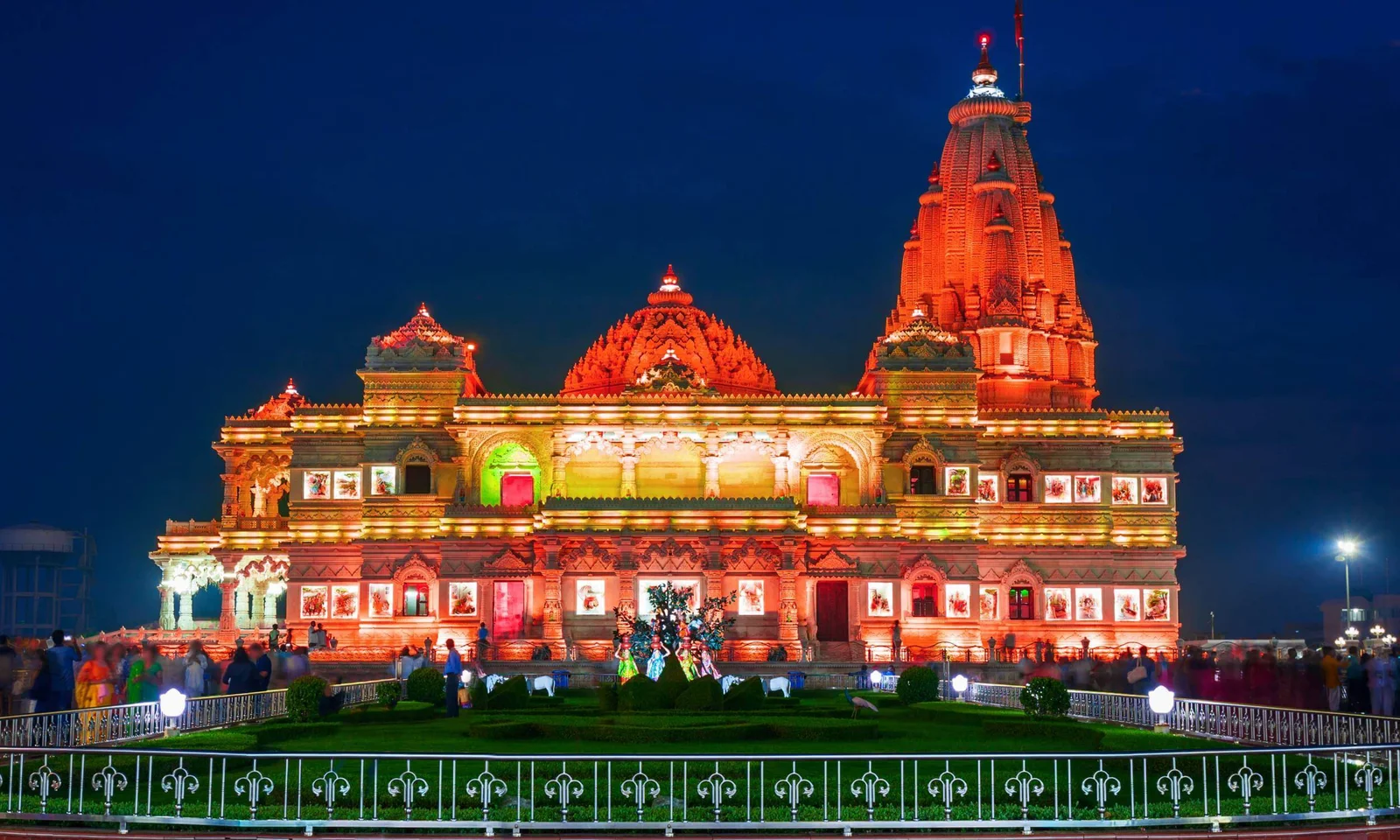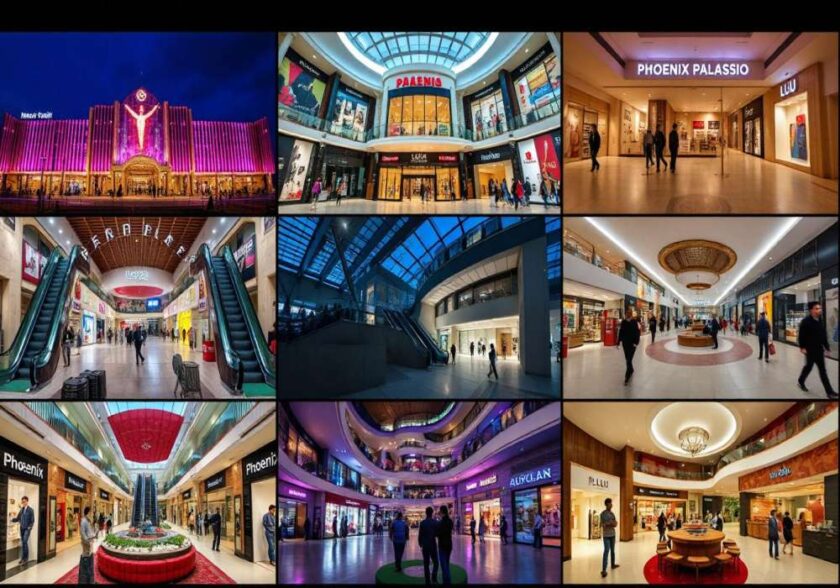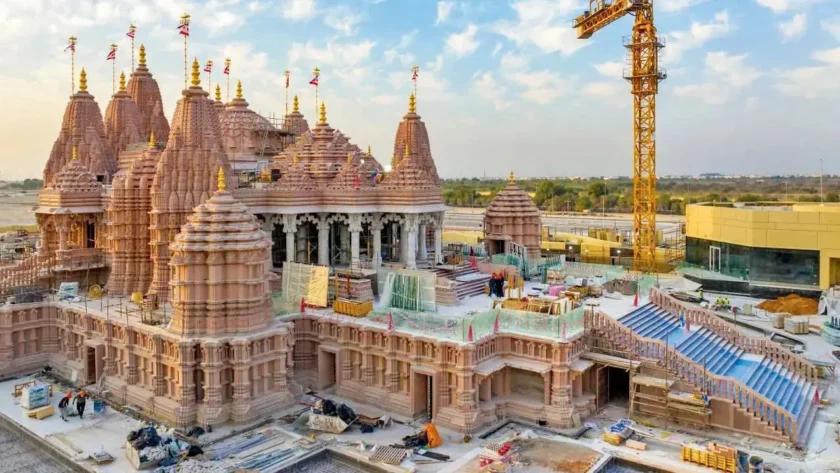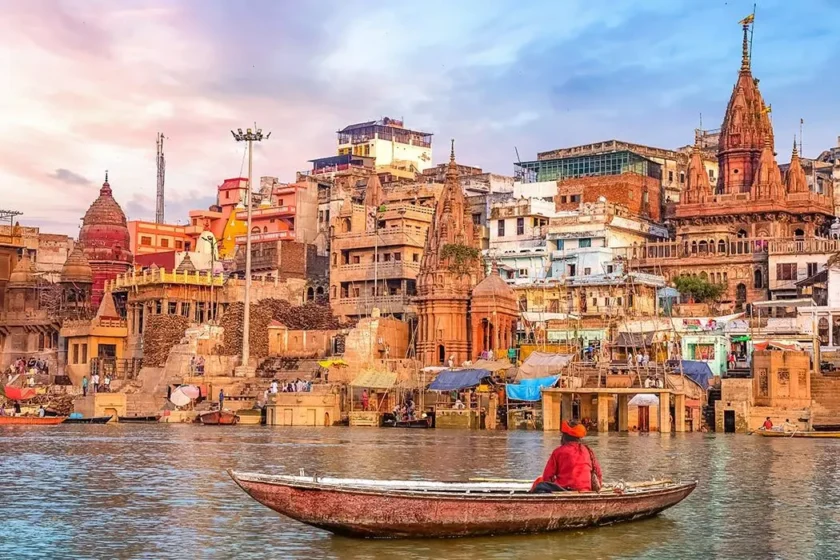Mathura: Nestled along the sacred banks of the Yamuna River in Uttar Pradesh, Mathura stands as a timeless beacon of spiritual radiance. Revered as the birthplace of Lord Krishna, the eighth avatar of Vishnu, this ancient city has been a cradle of devotion for over 2,500 years. But Mathura is more than a geographic marker; it is a living canvas of Krishna’s divine play—or lila—where mythology, ritual, and history intertwine seamlessly. Every temple, every ghat, every winding lane resonates with tales of Krishna’s childhood exploits, his acts of valor, and the eternal dance of love that binds the cosmos together.
As the heart of Braj Bhoomi—a region encompassing Mathura, Vrindavan, Goverdhan, and Barsana—Mathura draws millions of pilgrims and seekers each year. Its essence transcends festivals and temples; it is a spiritual ecosystem where devotion and culture merge. The city’s roots stretch deep into the Mahabharata and Puranas, where it was the prosperous kingdom of the Yadavas. Archaeological discoveries in the Mathura Museum reveal artifacts spanning Buddhist, Jain, and Hindu traditions dating back to the 5th century BCE, underscoring a pluralistic heritage. Yet, Krishna’s story reigns supreme, embodying love, righteousness, and cosmic harmony. As the Bhagavata Purana notes, “Mathura is the city where the divine descended to earth, illuminating the path of dharma amidst adharma.”
Historical Tapestry: From Ancient Glory to Resilient Faith
Mathura’s history is a saga of spiritual endurance and cultural synthesis. Founded around 1000 BCE, it flourished under the Mauryan Empire and later as a Kushan stronghold, producing exquisite red sandstone sculptures that influenced Gandhara art. Strategically located on key trade routes, the city became a crucible of cultural exchange, giving rise to artistic schools revered worldwide.
But Mathura’s spirit was tested repeatedly. Invasions—from Mahmud of Ghazni in 1017 CE to Aurangzeb’s iconoclasm in the 17th century—saw temples desecrated and treasures looted. Yet, each time, devotees rebuilt with fervor, embodying the Bhagavad Gita’s teaching: “Perform your duty equipoised, O Arjuna, abandoning all attachment to success or failure. Such evenness of mind is called yoga.”
The post-Mughal revival, aided by Maratha patrons and later British administrators, saw iconic shrines rebuilt, including the 19th-century restoration of the Keshav Dev Temple, razed in 1670 but revived as a symbol of unwavering faith. Today, Mathura’s museums house relics such as the colossal Yakshi statue, echoing the city’s pre-Krishna antiquity. Historians argue that Mathura’s endurance mirrors Krishna’s trials, as captured in the Harivamsa: “In Mathura, the lord’s birth dispelled darkness, just as the sun rises to vanquish night.”
Krishna’s Birthplace: Temples of Divine Leela
At the heart of Mathura lies the Krishna Janmabhoomi Temple Complex, marking the precise spot where Krishna was born in a prison cell under the tyrant Kansa. Surrounding the temple, remnants of a mosque from Aurangzeb’s era stand as silent witnesses to centuries of coexistence amid conflict. The temple’s golden pinnacles, intricate carvings of Krishna’s exploits, and chanting priests evoke the Srimad Bhagavatam’s vivid portrayal: “In that dark cell of Mathura, Vasudeva’s son was born, radiant as the full moon, destined to end the demon king’s reign.”
Nearby, the Dwarkadhish Temple, constructed in 1814, flaunts Rajasthani-style grandeur, its towering shikharas piercing the sky. Here, devotees relive Krishna’s rasa lila, immortalized in murals and sculptures. Poet-saint Surdas captures this devotion: “Mathura ki galiyan mein Krishna ka naam goonje”—the lanes of Mathura resonate with Krishna’s name. These sacred spaces are living theatres of faith, where bhajans and rituals animate the mortal and divine, forging profound spiritual experiences.
The city’s spiritual geography extends to sites like Vishram Ghat, where Krishna is said to have rested after defeating Kansa. Evening aartis here—lamps floating gently on the Yamuna—mirror the river’s mythic role. Puranas describe it as “the lifeline of Braj, purifying souls with its sacred waters,” a force that binds the region’s pilgrimage circuit into a cohesive spiritual journey.
Festivals: Bursts of Ecstatic Devotion
Mathura truly comes alive during its festivals, transforming the city into a kaleidoscope of color, music, and devotion. Holi, the festival of colors, commemorates Krishna’s playful antics, while the famous Lathmar Holi in nearby Barsana features women mock-striking men with sticks—a joyous reversal of social norms. “Holi in Mathura is Krishna’s lila reborn; colors symbolize the dissolution of ego in divine love,” reflects Tulsidas in his Ramcharitmanas.
Janmashtami, Krishna’s birthday, is celebrated with night-long vigils, fasting, and the ceremonial swinging of the infant god’s cradle amid conch shells and fireworks. Temples overflow with kirtans and bhajans, recreating the Janmotsav with reverence and exuberance. Radhashtami, honoring Krishna’s consort Radha, celebrates romantic devotion (shringara rasa), while the Yamuna Parikrama—a circumambulation of the river—draws ascetics and families alike, reinforcing the Gita’s wisdom: “He who sees Me everywhere and sees everything in Me, to him I am never lost, nor is he ever lost to Me.”
These festivals are more than rituals; they are living, breathing expressions of community, devotion, and shared spiritual ecstasy. The streets hum with music, dance, and chatter, transforming Mathura into a temple in itself.

Cultural and Artistic Legacy: Sculpting the Soul
Mathura’s artistic heritage radiates spiritual depth. The Mathura school of art, dating from the 2nd century BCE, pioneered anthropomorphic depictions of deities, influencing Hindu iconography for centuries. Jain tirthankaras and Buddhist Buddhas carved in local sandstone reflect a pluralistic ethos, while the Government Museum houses treasures like the colossal Varaha avatar sculpture, symbolizing cosmic preservation.
Folk traditions flourish alongside classical art. Rasa lila performances, recognized by UNESCO, dramatize Krishna’s life with intricate costumes, live music, and choreography. “In Mathura’s art, the divine form is etched eternally,” notes art historian Stella Kramrisch. Bhakti poetry, from Mirabai to Andal, resonates deeply in Braj, capturing the spirit of love and surrender: “My heart is in Mathura, where Krishna’s feet danced upon the serpent Kaliya.”
This legacy is omnipresent—etched in crafts, dances, and literature, ensuring that the spiritual splendour of Mathura permeates every aspect of cultural life. Even local artisans, through pottery, embroidery, and painting, perpetuate Krishna’s stories, blending devotion with daily livelihood.
Modern Pilgrimage and Global Resonance
Today, Mathura merges antiquity with modernity. The Vrindavan Chandrodaya Mandir, under construction as the world’s tallest temple, integrates eco-friendly designs with digital exhibits on Krishna’s philosophy. Pilgrims from across the globe—including ISKCON devotees—flock to Braj, globalizing the region’s devotional heritage.
Efforts to preserve the environment, such as Yamuna cleanup drives and sustainable temple initiatives, echo Krishna’s protective dharma. Urbanization and pollution pose challenges, yet the spiritual pulse remains strong. Swami Vivekananda observed during his visit: “Mathura’s air is charged with spirituality; it awakens the soul to its infinite potential.” Heritage walks, yoga retreats, and cultural festivals continue to draw seekers, blending tradition with contemporary engagement.
An Invitation to the Divine
Mathura’s true splendour lies in its ability to make the ineffable tangible. From the sanctity of Janmabhoomi to the exuberance of Holi, the city invites visitors to participate in Krishna’s eternal lila, to witness devotion in motion, and to experience faith that transcends centuries. The Bhagavad Gita’s timeless counsel resonates here: “Abandon all varieties of dharma and just surrender unto Me. I shall deliver you from all sinful reactions. Do not fear.”
For pilgrims and travelers alike, Mathura is more than a city—it is a living portal to the divine, where mythology meets reality, and history dances with devotion. Every temple, ghat, and festival is an opportunity to connect with a tradition that has endured millennia, a testament to the enduring power of faith.
In Mathura, the divine is not distant; it flows through the Yamuna, resonates in bhajans, and lingers in the laughter of children chasing colors during Holi. To visit Mathura is to step into a timeless story, one where the soul itself becomes a participant in Krishna’s eternal play.
Mathura beckons—not merely to see, but to feel, to surrender, and to discover the spiritual splendour that has inspired seekers for generations. Here, amidst temples, ghats, and the timeless river, faith is alive, vibrant, and eternal.






